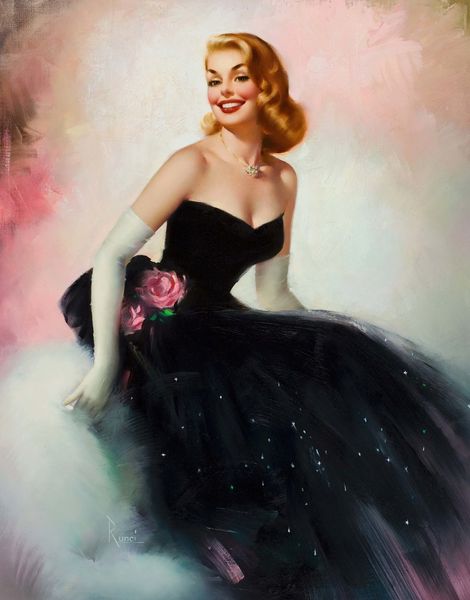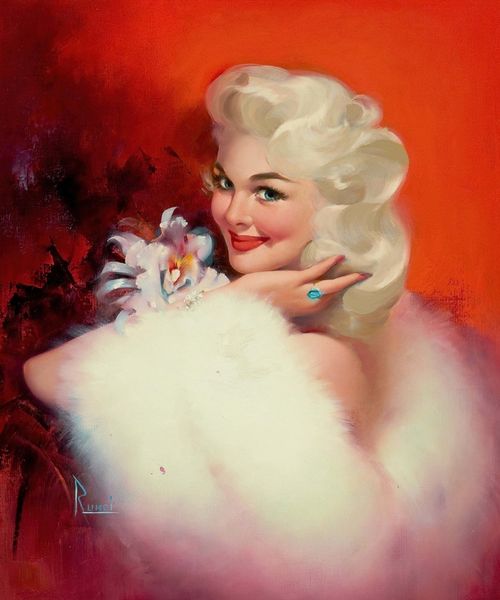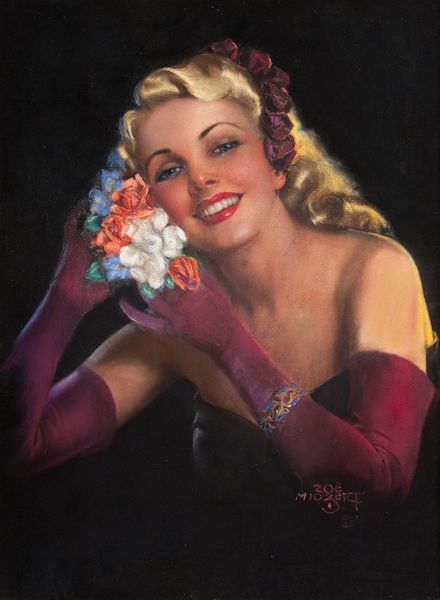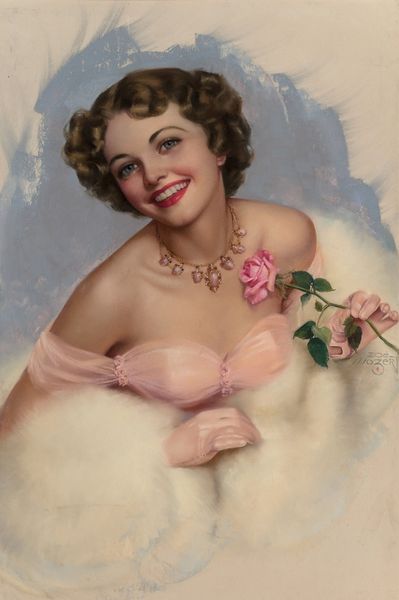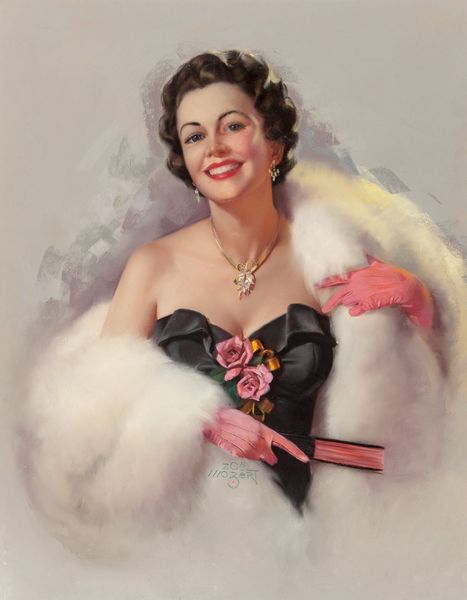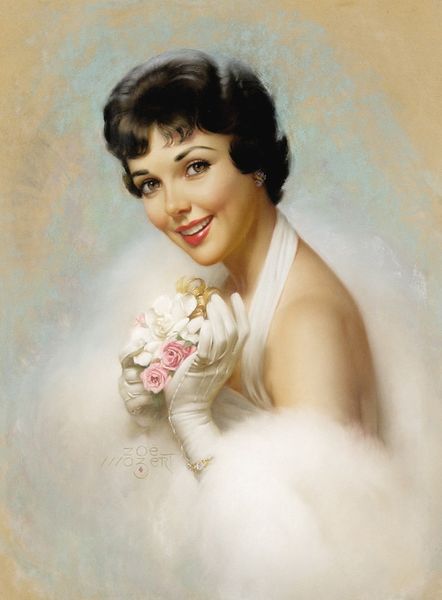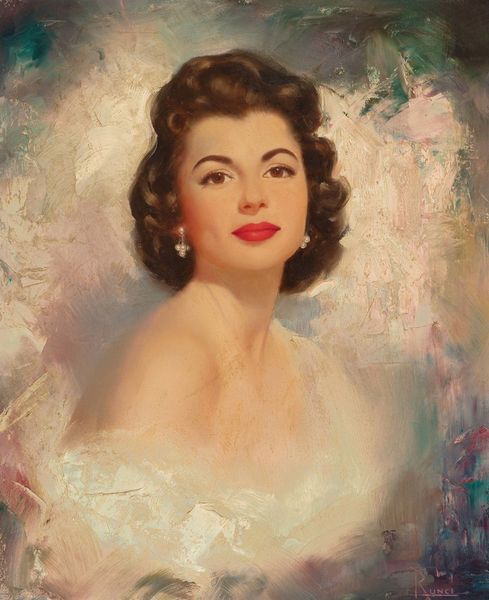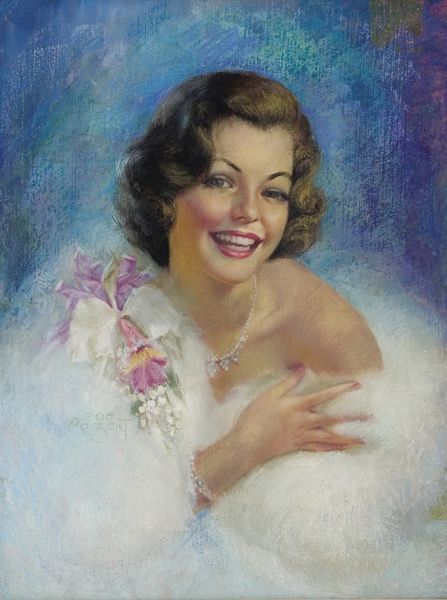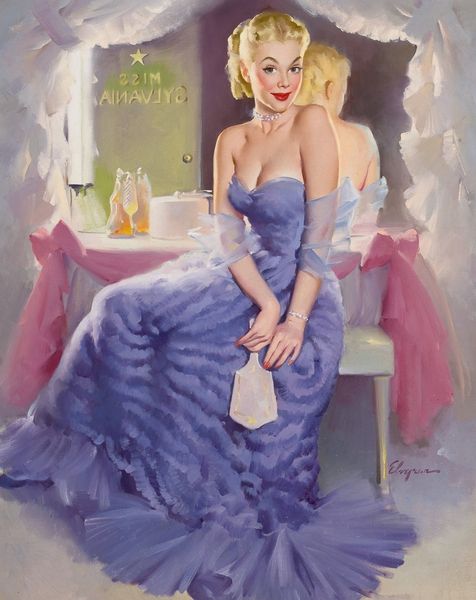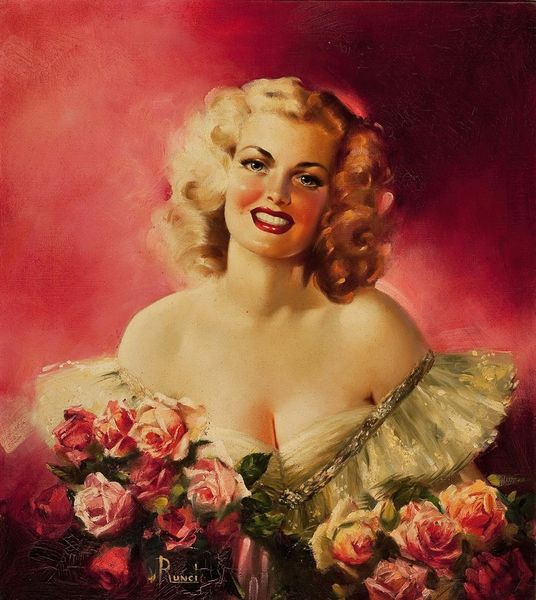
painting, oil-paint
#
portrait
#
painting
#
oil-paint
#
figuration
#
intimism
#
genre-painting
#
academic-art
#
realism
Copyright: Modern Artists: Artvee
Editor: Here we have Edward Runci's *Glamour Portrait*, an oil painting depicting a blonde woman. It’s quite striking, with its somewhat retro feel and hyper-feminine imagery. How do you interpret this work? Curator: I see this painting as a powerful reflection—perhaps even a critique—of mid-20th century societal expectations of women. The title itself, *Glamour Portrait*, is telling. It hints at the constructed nature of femininity. Do you notice the performative aspects? Editor: Yes, I see what you mean. It's almost like she's playing a role. The fur stole, the perfect hair, even the flowers she's holding. What exactly might the role be? Curator: Think about the historical context: post-war America, where women who had entered the workforce during the war were often pushed back into domestic roles. This image presents a very specific, idealized version of womanhood, one deeply rooted in consumerism and beauty standards. But consider the slight artificiality in her smile. What might that suggest? Editor: Maybe a sense of discomfort, or even a silent rebellion against those expectations? Curator: Precisely. This image exists in conversation with the broader societal pressures of the time. We can read the subject’s glamour, in some respects, as a façade or a costume she is wearing. Is she a subject or an object? This piece encourages us to examine the narratives around femininity, and whose interests they serve. Editor: That’s fascinating! I had seen it as a pretty portrait, but now I see it's asking bigger questions about women, society, and the gaze. Thanks so much for your insights! Curator: My pleasure. Hopefully it encourages us to interrogate such imageries with more care in contemporary times.
Comments
No comments
Be the first to comment and join the conversation on the ultimate creative platform.
